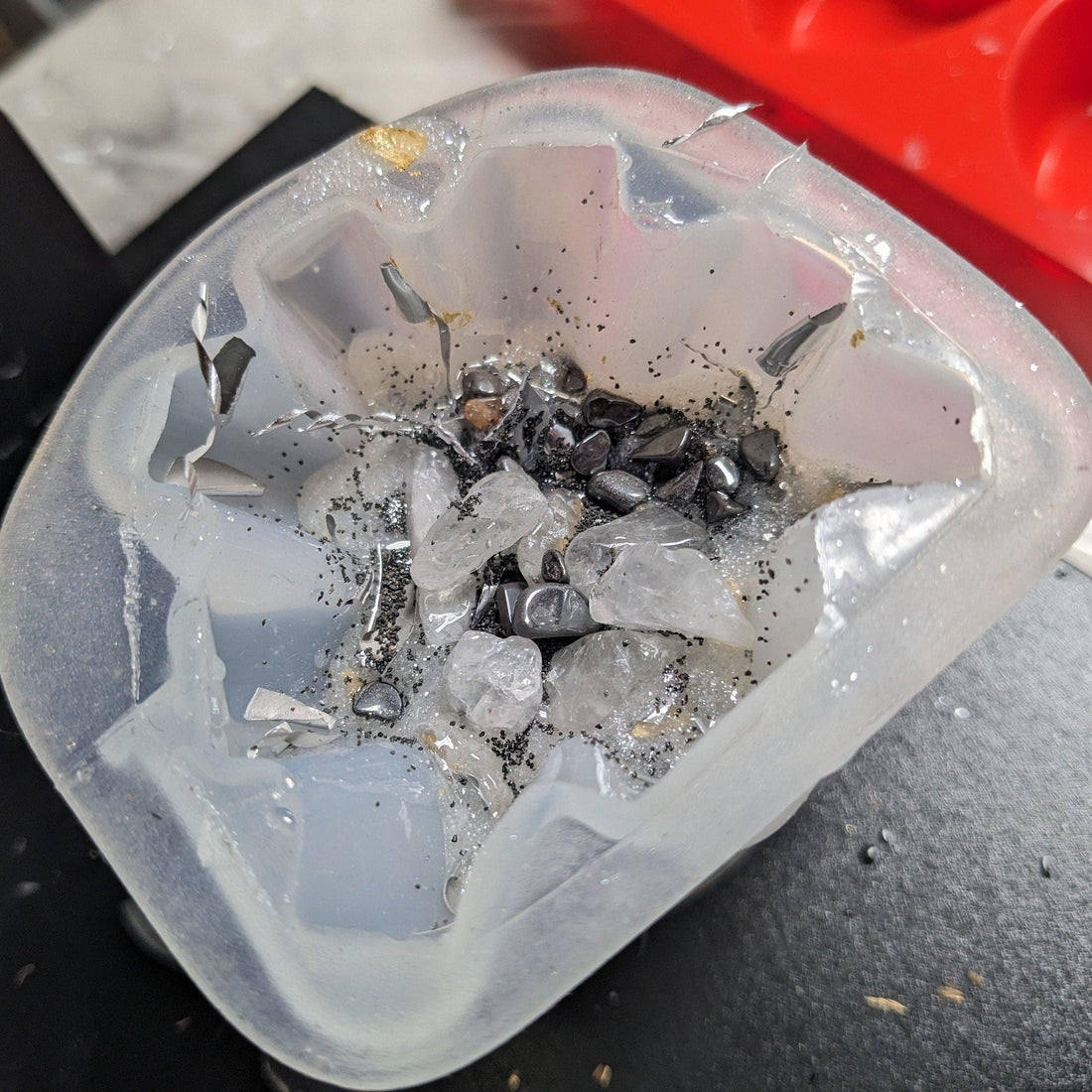
What’s Inside Orgonite? A Practical Look at How It’s Made
What’s Inside Orgonite? A Practical Look at How It’s Made
Whether you're new to orgonite or have a few pieces at home, you might be wondering:
What exactly is inside these pyramids, discs, or pendants—and why?
Orgonite is made from a specific mix of organic and inorganic materials designed to work together harmoniously. While some people use orgonite for spiritual or energetic reasons, the components themselves are grounded in real materials science.
Let’s break down what goes into orgonite and why each element matters.
🔩 1. Metal Shavings – The Inorganic Element
Purpose: Conducts and reflects energy
Common Metals Used:
-
Copper
-
Aluminum
-
Brass
-
Steel
-
Gold or silver flakes (for higher-end pieces)
Metal shavings are the “inorganic” part of the orgonite matrix. These are essential for creating a responsive field when surrounded by organic material like resin. Copper, in particular, is favored for its excellent conductivity and aesthetic appeal.
✅ Why It Matters:
Metals naturally interact with surrounding electromagnetic fields (EMFs). In orgonite, they’re believed to help disperse or redirect stagnant or chaotic energy in your environment.
🌿 2. Resin – The Organic Element
Purpose: Holds everything together & compresses quartz
Material: Usually polyester or epoxy resin
Resin is the “organic” material in orgonite. When it cures, it shrinks slightly—applying pressure to any quartz crystal inside. This is key to activating the piezoelectric effect (more on that below).
✅ Why It Matters:
Resin locks in the metals and quartz, forming a dense, solid matrix. The resulting compression helps generate a low-level electrical charge from the quartz.
🔮 3. Quartz Crystal – The Activator
Purpose: Generates energy under pressure
Common Type: Clear quartz point or chip
Quartz is a naturally piezoelectric crystal. That means when it’s compressed—like by resin during curing—it can emit a small electrical charge. This helps create the “active” aspect of orgonite.
✅ Why It Matters:
Quartz adds a dynamic layer to the orgonite, making it more than just decorative. Even in non-spiritual terms, this simple pressure-based reaction plays a big role in how orgonite interacts with its environment.
💎 4. Optional Crystals – For Additional Properties
Some orgonite makers include other crystals, such as:
-
Amethyst (calming)
-
Black tourmaline (grounding)
-
Rose quartz (soothing)
These additions aren’t necessary for orgonite to function but are often included for their natural beauty and the specific properties they’re associated with.
🔧 How It All Comes Together
Making orgonite is a careful, handcrafted process:
-
Mold Selection – Choose a shape (pyramid, disc, pendant, etc.)
-
Layering – Metals and crystals are arranged in layers or patterns
-
Resin Pouring – Resin is mixed and poured over the contents
-
Curing – The piece is left to harden for several hours to a day
-
Polishing & Finishing – Final touches to ensure clarity and shine
At Wired Crystal Store, each orgonite piece is handmade with intention and care—whether it’s meant for your desk, bedside table, or wearable as a pendant.
🏡 Why Materials Matter
Understanding what goes into orgonite helps you choose quality pieces that align with your needs. Whether you’re looking to reduce EMF exposure, create a more grounded home office, or simply enjoy the natural beauty of handcrafted tools, the right mix of materials makes a difference.
👉 [Explore Our Handmade Orgonite Collection – wiredcrystalstore.shop]